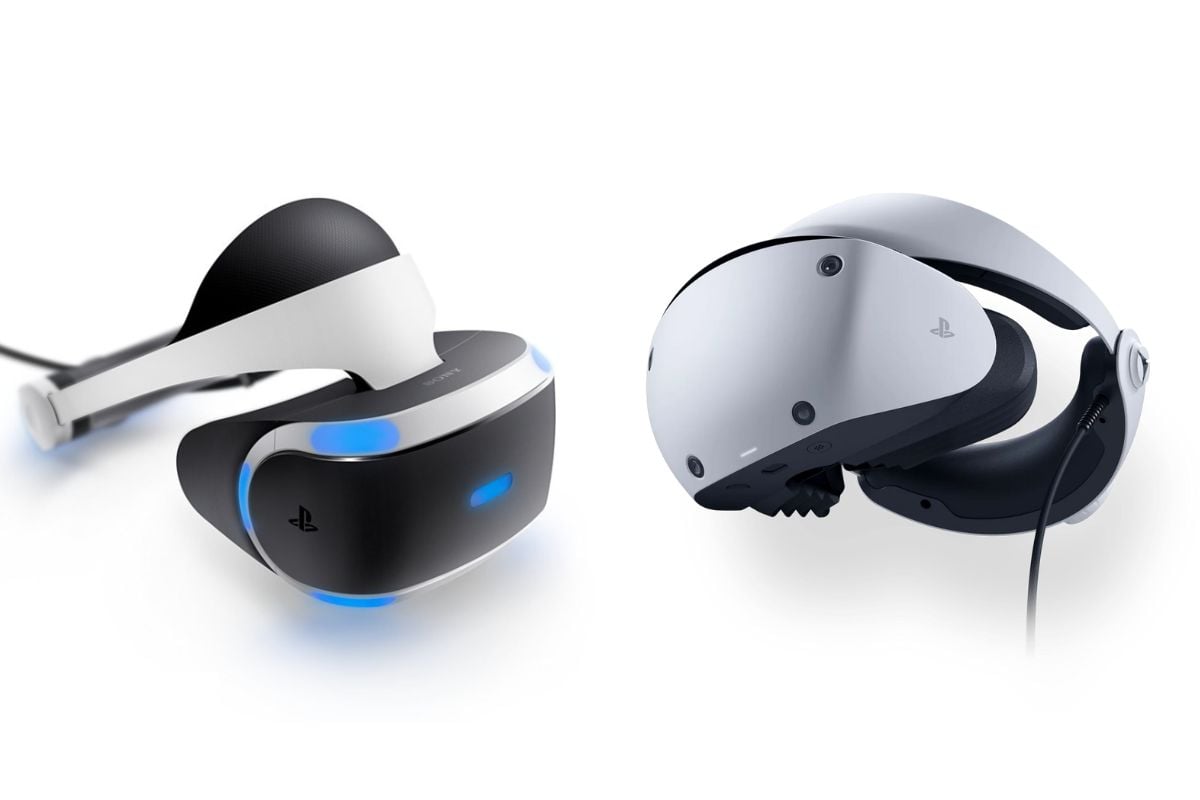With the release of PSVR2, Sony has made many improvements to the original PSVR, improving visuals, comfort, and interactivity. But what’s the real difference between these two headsets? Let’s dive into the features and performance improvements that make PSVR2 a major evolution of PSVR.

Sony released the original PlayStation VR (PSVR) console in 2016, revolutionizing console-based virtual reality. PSVR provides PlayStation users with an affordable, high-quality virtual reality experience. But as the landscape evolved, so did the need for expanded virtual reality capabilities, which laid the foundation for PSVR2. Released in 2023, PSVR2 aims to improve VR on PlayStation 5, promising a more immersive and seamless experience.
Whether you’re planning to upgrade to PSVR or getting into VR for the first time, it’s important to understand the differences between the two headsets. Below, we compare PSVR and PSVR2 in terms of display quality, tracking, controllers, ease of use, and compatibility to help you make an informed choice.
Display Quality: A Big Step Forward
One of the most important upgrades to PSVR2 is its display. The original PSVR featured a 5.7-inch OLED screen with a resolution of 1920 x 1080. This gave it decent visual clarity, but it suffered from the infamous “screen door effect” where users would sometimes see gaps between pixels, reducing immersion.
PSVR2 has made significant improvements in this area. The new headset features a 4K HDR OLED display (2000 x 2040 per eye) that delivers clearer, brighter images while eliminating the screen door effect for a smoother, more immersive experience. PSVR2 also supports HDR (high dynamic range), which means users can experience more realistic lighting and colors, greatly increasing the depth of the virtual environment. Additionally, PSVR2’s field of view is expanded to 110 degrees (compared to PSVR’s 100 degrees), creating a more immersive sense of space and peripheral vision.
Tracking and motion sensors
The original PSVR was relatively simple, relying on external cameras and LED sensors on the headset and controller. This setup requires the user to stay in a limited space, and problems with accurate tracking sometimes arise, especially when the user moves out of the camera’s line of sight or in low-light conditions.
PSVR2 solves this limitation by using a reverse tracking system with four cameras. This means it doesn’t rely on external cameras, allowing players to move and explore the environment more freely without losing tracking accuracy. PSVR2 also offers eye tracking, a revolutionary feature that detects where the user is looking. Eye tracking improves interaction through foveated rendering, a technology that renders graphics at higher quality when the user’s gaze is focused, improving performance without sacrificing visual fidelity.
In addition to improved tracking, PSVR2 adds new motion sensors such as haptic feedback in the responsive headset. Together, these updates make PSVR2 more versatile and responsive, resulting in a smoother, more intuitive VR experience.
Controllers: Upgrading from Move to Sense
The main criticism of the original PSVR was its controllers. VR interactions often feel clunky and lack immersion, limiting users from fully experiencing virtual reality.
PSVR2 abandons the Move controllers in favor of the new PSVR2 Sense controllers. These controllers are designed specifically for virtual reality. With customizable triggers, haptic feedback, and capacitive touch sensors, the Sense controllers deliver a more immersive experience. Adaptive triggers adjust resistance, while haptic feedback creates more tactile sensations. Capacitive touch sensors enable the controller to detect where the user’s fingers are, allowing for more natural gestures and hand movements.
These improvements make the PSVR2 Sense controllers far superior to the Move controllers, changing the way users interact with the virtual world.
Setup and Ease of Use
Setting up the original PSVR can be a complex task, requiring multiple cables, breakout boxes, and external cameras. This makes the process tedious and time-consuming, especially for new users. Additionally, PSVR’s use of the PlayStation camera means tracking is more limited and requires users to stay within the camera’s field of view.
PSVR2 makes setup even easier. PSVR2 connects directly to the PlayStation 5 via a USB-C cable, eliminating the need for an external camera or complicated cable routing. This streamlined approach reduces confusion and allows for an easy transition to virtual reality without extensive preparation. PSVR2’s inside-out tracking also adds to ease of use, eliminating the need for users to stay within the camera’s line of sight. As a result, PSVR2 is not only easier to set up, but also offers a more flexible and immersive experience.
Price and Value
PSVR initially launched at a relatively affordable price, making it an affordable entry point into VR. However, PSVR2 is more expensive due to its advanced technology and additional features. While this may put off some casual users, it’s a worthwhile investment for those who want the best VR experience Sony has to offer on the PlayStation 5.
With improved resolution, inside-out tracking, new Sense controllers, and other advanced features, PSVR2 delivers a deeper experience that justifies the higher price. For those who own a PS5 and want the ultimate VR experience, PSVR2 will be a significant upgrade from the original.
Conclusion
PSVR2 is a major step forward from the original PSVR, with significant improvements in display quality, tracking, controllers, and the overall user experience. Sony has taken the lessons learned with PSVR and addressed its limitations with PSVR2, creating a headset that meets the demands of modern VR experiences.
For PSVR owners, the decision to upgrade will depend on how much they value these improvements and their quality. Get ready to invest in the future of virtual reality on PlayStation 5. For new VR enthusiasts, PSVR2 delivers an unparalleled PS5 experience and opens a new chapter in console-based VR. Whether you’re upgrading or using VR for the first time, PSVR2 sets a new standard, making it an attractive option for anyone who wants to experience the next generation of VR.